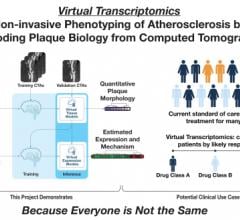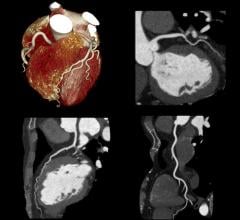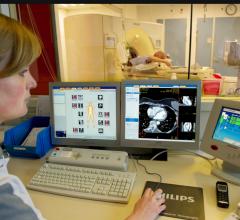
An example of an FFR-CT image, showing the FFR values for all coronary vessel segments and the reduction in hemodynamic flow after specific lesions.
July 12, 2017 — The American Medical Association (AMA) has granted a Category III Tracking Code for estimated coronary fractional flow reserve (FFR) using computed tomography (FFR-CT). Category III CPT codes are approved to track emerging technology, services and procedures. These new CPT codes, released July 1, 2017, and effective Jan. 1, 2018, will allow payers and other stakeholders to track use of FFR-CT in clinical practice across the country.
The effort to gain the reimbursement code for this coronary CT angiography (coronary CTA) was undertaken by the Society of Cardiovascular Computed Tomography (SCCT) in partnership with the American College of Cardiology (ACC) and the Society for Cardiovascular Angiography and Interventions (SCAI). The societies sought and received approval for for FFR-CT because they feel the non-invasive imaging technology is an important diagnostic tool poised to enable better decision-making in patient care.
“The noninvasive measurement of FFR is a significant breakthrough in cardiac imaging that will allow for the determination of the significance of a coronary stenosis, said Leslee J. Shaw, Ph.D., SCCT president. ”The result is that patient care may be more effectively guided when coronary CT is combined with FFR for those patients with intermediate coronary stenosis”
Watch the VIDEO "New CPT Reimbursement Codes for Cardiology," from the SCCT 2017 annual meeting.
For more information on the new codes (0501T-0504T), including code descriptors, see - https://www.ama-assn.org/sites/default/files/media-browser/public/cpt/cpt-category3-codes-descriptors.pdf
The new CPT code was big news at the SCCT 2017 annual meeting, where it was touted as the first reimbursement code the society has advocated for and succeeded in getting approved by the AMA.
Watch a VIDEO with James Min, M.D., explaining for FFR-CT works.
For more information: www.SCCT.org


 March 07, 2024
March 07, 2024 








